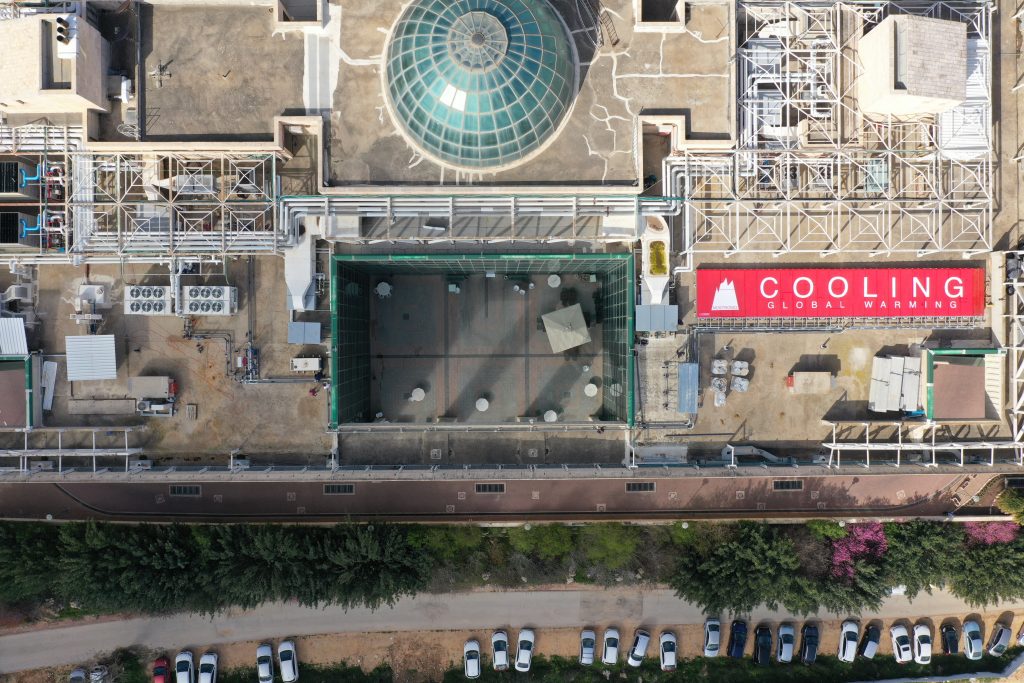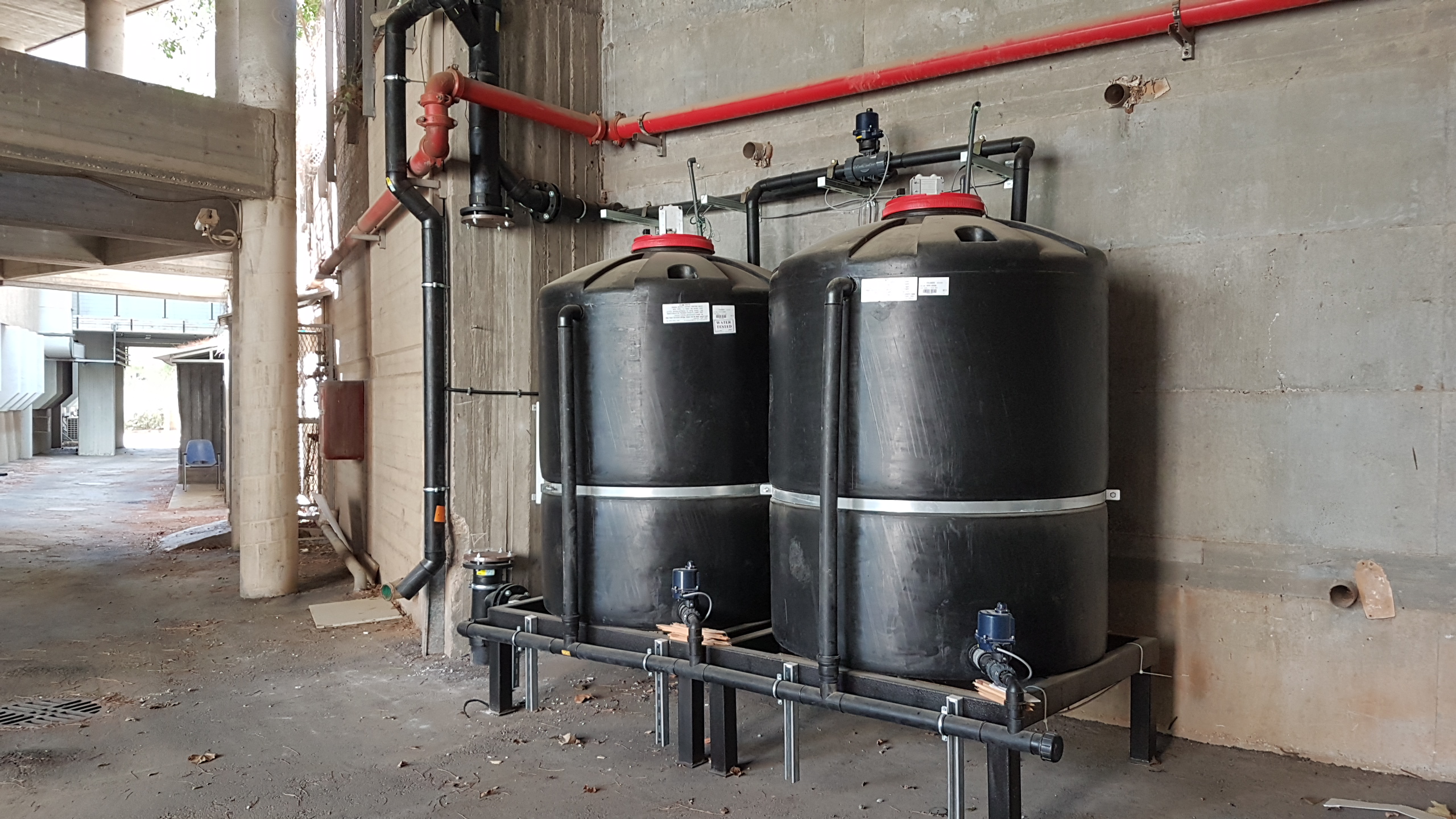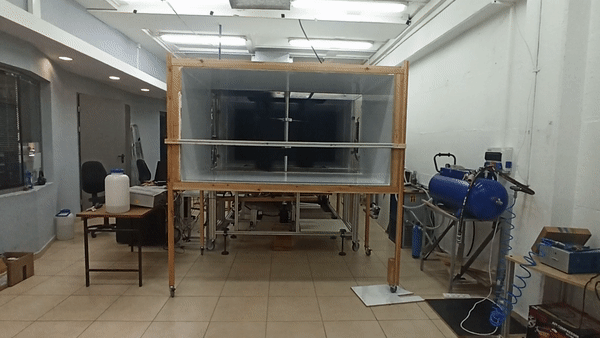Putting Buildings on Ice
August 16, 2021With renewable energy storage lacking and demand for indoor cooling spiking, an Israeli company has found a sustainable way to supply both.
As the momentum of climate change continues to grow, scientists and engineers are striving to improve the efficiency of renewable energy technologies in order to justify the shift from the fossil-fuel based economy, which our society has relied on since the 1800s, to a clean energy economy. As the effects of the climate crisis are becoming more and more visibly clear, fortunately, the renewable energy sector is growing at an astonishing rate. According to data from the International Renewable Energy Agency (IRENA), the world increased its renewable energy capacity by more than 260 gigawatts in 2020 (more than 80% of all new electricity capacity added in 2020)––surpassing the prior year’s expansion by almost 50%. And out of the renewable capacity added, energy derived from solar and wind accounted for 91%.
To ensure that solar and wind technology can handle such an increased share of demand, governments are beginning to seriously expand renewable energy installations, and companies are starting to invest in its capabilities. For example, President Biden’s administration has already begun taking action to achieve 80% renewable energy use by 2030, and countries like China, Japan, Germany, and many others throughout northern Europe are making significant progress as well. Tech giants such as Apple, Amazon, Google, Microsoft, and Facebook have also followed suit signing power purchase agreements to reduce the cumulative impacts of their businesses.
However, if our world is going to keep adopting and integrating alternative sources of energy, understanding how to prevent energy gaps and minimize inconsistencies within the energy grid will be unavoidably necessary. This means installations alone won’t cut it because, on their own, all renewable energy technologies like the ever-increasing solar panels and wind turbines share a common disadvantage that prevents them from immediately and completely revolutionizing the world’s current energy profile––sufficient energy storage.
Storing Energy for Later

The switch to renewables often comes back to the classic question: what do you do when the sun isn’t shining, or the wind isn’t blowing? When the sun sets, electricity derived from solar energy cannot be generated, meaning that the power grid is forced to rely on other sources, often non-renewable ones. The same applies to windless conditions.
When it comes to solar energy production, think about it like this: peak demand for power most often occurs in late summer afternoons and evenings when people return home from work and turn on their electrical appliances, resulting in a surge of electricity usage at a time when solar energy generation is declining.
This is where energy storage becomes important. These are technologies that capture the clean-generated electricity, store it as another form of energy whether its chemical, thermal, or mechanical, and then release it as needed. Because renewable energies, especially solar, do not produce enough electricity at the times it is needed the most, storage makes it possible to use that energy at a different time from when it was initially generated, thereby matching its supply to accommodate the demand.
Cooler Air, Hotter Planet

With extreme temperatures becoming more common throughout the world, 20% of the electricity utilized by buildings is used for indoor cooling in the form of air conditioning (AC), an end use that has tripled since 1990 through 2016. With over 1.6 billion units in use worldwide (over a half of them in the US and China), they consume 2,000 terawatt hours (TWh) of electricity on a yearly basis––more than twice the total electricity used by Africa. And because the majority of the electricity used to operate ACs is generated via the constant burning of fossil fuels, its carbon footprint has become highly problematic. Just as AC sales have tripled, so have its annual carbon emissions, which currently total 1,130 million metric tons––the equivalent of Japan’s total emissions.
As it continues to become more necessary to cool residential homes and commercial sector buildings, AC will continue to strain electric grids, increasing the chances of grid failure and widespread power outages from overloading the system amongst other end uses. Already, we’re seeing AC reach 70% of peak electricity demand in the Middle East and certain areas of the United States, particularly the American Southwest.
With no real end in sight for rising temperatures, The International Energy Agency (IEA) projects the AC dilemma to only worsen because of how it contributes to a constant feedback loop: the hotter it gets, the more people use and buy ACs, which prompts greater CO₂ emissions, which warms the planet even further, and so on. As a result, the agency predicts energy use for space cooling to triple again by 2050 to 6,200 TWh with close to 70% of the increase attributed to the residential sector as robust economies begin to emerge in countries like India or Indonesia enabling more people to afford ACs for their homes.
“What’s going to happen in the next 10 years is that in places like India, Philippines, Thailand, and Malaysia, the people there will be able to afford air conditioning so demand for electricity––for air conditioning––will skyrocket. It’s skyrocketing now as we speak,” says Nostromo founder, Yaron Ben Nun.
Cool as Ice

Without sufficient energy storage for renewables, electricity demand for indoor cooling will continue to heavily rely on fossil fuels, something that the planet will soon not be able to afford anymore.
“I understood that if solar power was going to be the big winner for clean energy, then the next big thing in its technology would be storage because at sunset, the whole system would turn off,” says Ben Nun. This led him to establish Nostromo, an Israeli company poised to provide an innovative energy storage system that also supplies a sustainable source of indoor cooling called the IceBrick.
“I wanted to be part of something that could bring about big change for the greater good,” says Ben Nun. “My enthusiasm stems from being at this point in time where we can truly influence reality.”
Nostromo’s IceBrick is a modular thermal cell based on the high energy storage potential in water as it experiences a phase change from liquid to ice. The thermal ice energy storage process works by freezing water using either a surplus of unused solar energy or inexpensive electricity at off-peak hours and thawing the ice during the day to supply plentiful air conditioning to buildings. Doing so alleviates the added pressure air conditioning would normally place on electrical infrastructure and reduce the need for utilities to build additional power plants to meet rising demand.
According to Nostromo, only 102 MW of the 196,000 MW of energy storage systems utilize the thermal ice method despite it being ten times more efficient in its energy density per square meter than any other available solution. This is why Ben Nun is so confident that regular tap water is the answer.
“The ability of water to hold cold energy when it changes from liquid to solid is unbelievably high, and tap water is widely accessible,” he says. “It’s not lithium, or cobalt, or any other kind of rare earth material. You just open the tap water, and you have the best material by far to hold cold energy.”
Nostromo’s thermal ice energy storage technology is seen as more environmentally conscious and sustainable than the majority of energy storage systems on the market that rely on lithium-ion energy storage, which requires intensive mineral extraction, a process infamous for water contamination, especially in the regions where water is already scarce. For instance, the area bordering Argentina, Bolivia, and Chile contains one of the world’s largest subterranean metal deposits, and for each metric ton of extracted lithium, 500,000 gallons of water are pumped to bring it to the surface, depriving local farmers and communities. Tibet represents another notorious example suffering from the environmental consequences of lithium mining. There, the waste left from lithium mines were dumped into the Lichu River, killing and contaminating massive amounts of fish and polluting the drinking water for the nearby communities.
“Lithium-ion batteries are destroying the Earth when you take them from the ground,” says Ben Nun. “They pollute as they break down, they catch fire, they’re unsafe, their life ends after 8-9 years, and you must bury them as if they were nuclear waste. You cannot build a clean energy grid that consists of unsustainable sources like lithium-ion.”
The Way to a Cooler Future
Commercially available since 2020, Nostromo’s environmentally friendly technology suits numerous environments including office buildings, hospitals, hotels, or factories and is flexible in that it can either be an extension of the desired building or fit in as a modular unit.
While the IceBrick system is unique to Nostromo, there are other competitors in the world of water-based energy storage such as CALMAC, Baltimore Aircoil, and FAFCO, exemplifying the potential this technology has as we venture further into a climatically worrisome future.
“Everyone that puts money into my startup believes that this technology must happen with or without me. I will say that water will prevail because it simply makes sense,” he concludes.
This ZAVIT Article was also published in NoCamels on 12 Aug. 2021







